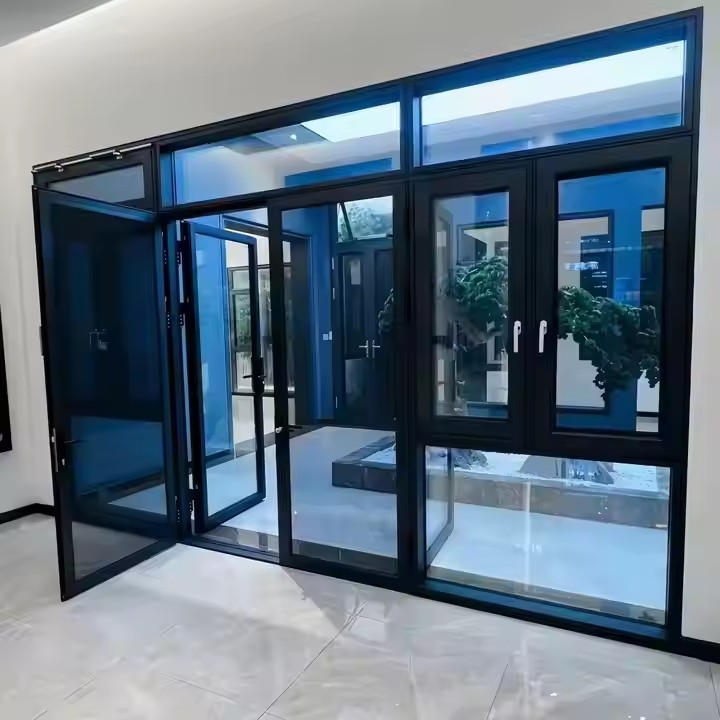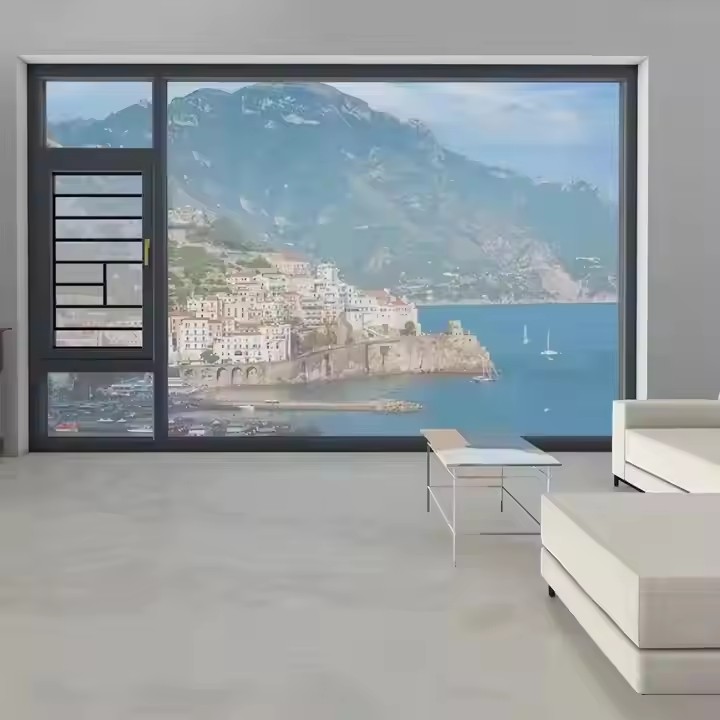Chinese doors and windows are generally designed with a focus on durability and structure, aligned with Chinese architectural aesthetics. Moreover, China’s manufacturing and delivery processes are known for their speed and efficiency, reflecting the country’s mature production capacity.
- Preferred Frame Materials
Australia:
Wood is widely used in Australia due to the country’s rich natural timber resources. High-quality hardwoods such as Tasmanian Oak offer excellent strength, durability, and aesthetic appeal—making them ideal for doors and windows. After appropriate treatment, many types of wood can meet various fire resistance ratings. For example, untreated hardwood can achieve a BAL-19 rating, while treated timber can meet the higher BAL-29 or even BAL-40 standards.
Apart from wood, aluminum alloy is another common framing material. Given Australia’s extensive coastal regions, high corrosion resistance is crucial. Aluminum frames often undergo dual-layer protective treatments to form a dense oxide layer that prevents chloride ion corrosion.
China:
The mainstream materials for door and window frames are uPVC (plastic-steel) and aluminum alloy. uPVC windows are popular for being cost-effective, thermally insulated, and soundproof, with mature manufacturing technologies ensuring stable quality and wide application. Aluminum alloy windows, known for their strength, formability, and corrosion resistance, are particularly favored in the mid-to-high-end market. The use of thermal-break aluminum technology has further enhanced their insulation performance.

- Glass Material Selection
Australia:
Building codes in Australia impose strict requirements on the energy performance of doors and windows, leading to diverse and functional glass configurations.
Common types include:
Single-layer tempered glass, used in basic residential safety applications.
Double-glazed insulated glass, which enhances thermal and acoustic insulation and is widely adopted.
Low-E glass, frequently used to reduce UV and infrared radiation, improving energy efficiency in both hot and cold climates.
Laminated safety glass, often applied in high-rise buildings or areas with higher safety requirements.
China:
Single-layer glass was previously common in standard residential buildings, but with growing energy efficiency standards, double-glazed insulated glass has become mainstream. Low-E glass is increasingly adopted in northern and energy-conscious regions to improve insulation and reduce heat transfer. Laminated glass is primarily used in areas requiring high safety and soundproofing performance, such as buildings near highways or premium office spaces.
- Auxiliary Materials and Hardware
Australia:
Sealing strips are typically made of high-durability silicone rubber, and in premium or weather-resistant products, the sealing system may use three layers instead of the standard two. This improves air-tightness and water-tightness under extreme weather such as storms or sand-laden winds.
Hardware components are held to high standards—hinges, handles, and locks undergo rigorous testing to ensure long-term stability, safety, and resistance to wear.
China:
A wide range of sealing strip materials are used, with EPDM rubber (ethylene propylene diene monomer) being the most common. It offers good weather resistance, aging resistance, and sealing performance at a moderate price, suitable for most standard windows.
Hardware quality varies across the market—mid-to-high-end products use premium, well-designed fittings that perform and look excellent, while lower-end products may suffer from inferior durability and reliability.

- Special Materials and Techniques
Australia:
Many Australian windows incorporate timber reveals, particularly inline timber reveals (cover-type window trims), which are essential components for achieving higher energy ratings. They play a notable role in meeting Australian energy efficiency standards.
In addition, due to the threat of bushfires in some regions, Australia has developed dedicated fire-resistant window materials and technologies, including specialized fire-rated glass and fireproof sealing systems.
China:
With the rise of green and passive buildings, advanced insulation materials and processes such as vacuum glazing and warm-edge spacers are being introduced to further improve thermal and airtight performance.
In typhoon-prone coastal areas, some Chinese manufacturers have developed reinforced wind-resistant window structures, though these are not yet as standardized or widespread as Australia’s bushfire protection systems.
- Environmental and Sustainability Considerations
Australia:
Timber harvesting is strictly regulated to ensure sustainable management and legal sourcing, with most products carrying sustainability certification marks. Metal materials such as aluminum are also subject to recycling and reuse practices to minimize environmental impact and resource waste.
China:
China has been actively improving the environmental standards of its door and window materials. Manufacturers are encouraged to reduce harmful emissions during production and develop eco-friendly uPVC formulations.
Recycling systems for aluminum and uPVC frames are also being strengthened as part of broader waste classification and resource recovery initiatives, creating a more complete and sustainable material lifecycle.

